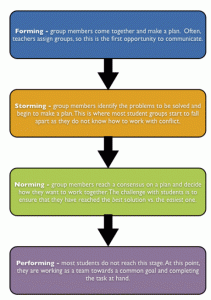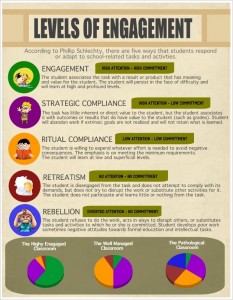Looking around my classroom, I saw the students who knew how to play the game: they asked questions, they answered questions, they made connections. Hidden in pockets were other students, the ones I didn’t hear from frequently, the ones I wasn’t quite sure about what they knew at the end of each day. Their hands didn’t fly up when I posed a question, and they didn’t bubble over with enthusiasm when they made a connection to their learning outside our classroom. I needed to hear from these students, too, and I wasn’t sure how to shift my instruction to make that happen.
Striving for Effective Collaboration
Collaborative learning sounded like one way I could hear more voices. I agreed with Heflebower, Marzano and Pickering, who suggest “If students are not engaged, there is little, if any, chance that they will learn what is being addressed in class…. Student engagement happens as a result of a teacher’s careful planning and execution of specific strategies” (The Highly Engaged Classroom, 2011).
I was ready to embed more of collaborative learning in my classroom to improve student engagement. With the best of intentions, put students into groups, gave them some meaningful work to tackle, and then had them present their thinking. Easy.
Except–only some students in the group were doing the work of learning. I couldn’t tell who was able to do what or who knew what. It was messy. I realized students had little understanding of what effective collaboration looks like, as in Tuckman’s stages of group development.
Falling Short
So, I kept trying. I numbered students off; I gave them individual reflections to complete during and after group work; I assigned roles. Something was still missing. Hattie’s meta-analysis of the research on collaborative structures suggested a .59 effect size (wow!), and yet, I wasn’t seeing that kind of impact on my own students’ learning.
 When I honestly considered Schlechty’s Levels of Engagement, however, I had to admit too many students hovered around ritual or strategic compliance.
When I honestly considered Schlechty’s Levels of Engagement, however, I had to admit too many students hovered around ritual or strategic compliance.
The Research I Wish I Knew
Fast forward to two years ago, when a colleague of mine asked if I had heard about Kagan structures. Dr. Kagan’s research on collaborative structures identified my biggest goals for students in their work together.
Kagan’s work focuses on four principles of effective collaboration:
- positive interdependence
- individual accountability
- equal participation
- simultaneous interaction
Kagan Structures
Kagan’s collaborative structures are easily adapted to your classroom. Teachers who attended yesterday’s optional faculty meeting are already adjusting the strategies below to meet the needs of their students. One math teacher used Rally Coach today to help students work through perimeter and area problems. An art teacher adapted the structure and asked students to play the roles of Design Coaches, helping their partners think through the use of negative space in their works.
Your turn
How would you adjust or use one of the strategies above to enhance student collaboration in your classroom? What other collaborative strategies have you used to improve student engagement and learning?

